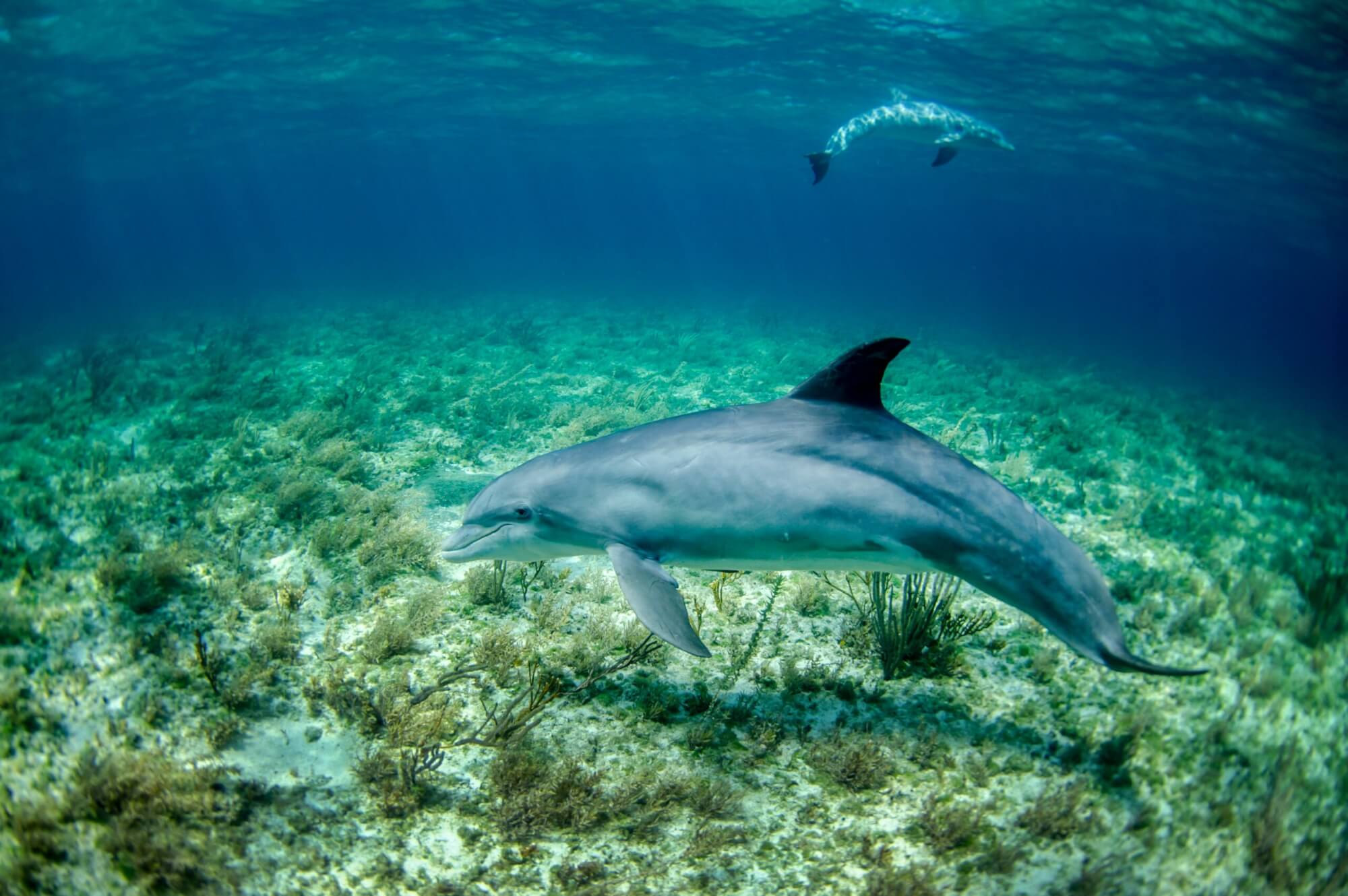Now that we’ve discussed human bias in the study of animal intelligence, let’s explore in this second part the different forms that animal intelligence can take. Rather than comparing these forms of intelligence to that of humans, it is essential to appreciate them for what they are – creative, adaptive solutions developed over millions of years of evolution. Let’s explore some of these together, keeping in mind that they can be cumulative.
Intelligence adapted to the needs of the species
An interesting example of this fascinating form of intelligence is that of Old Thom, a killer whale that, unlike his peers, most often swims alone. What’s surprising is that this individual is known to swim alongside Atlantic white-sided dolphins with which it is even able to communicate! Indeed, researchers have realized that certain killer whales that are exposed to dolphins over a fairly long period were able to decode their language with its high-frequency clicks and whistles. Some animals therefore have the ability to learn the language of other species. Pretty impressive, isn’t it?
Other species have developed adaptations based on the long journeys they undertake every year in the course of their seasonal migrations. This is what one might call spatial intelligence, which manifests itself in the form of tremendous navigational and spatial orientation skills. For example, some birds such as pigeons have the ability to detect the Earth’s magnetic field, which allows them to orient themselves during their migrations and locate their nest sites after being released a considerable distance from their point of departure. Though hard evidence is lacking, scientists believe that certain species of whales might also be able to detect the Earth’s magnetic field, notably humpbacks and grey whales. Indeed, these species are believed to have a high concentration of magnetite in their inner ears, a magnetic mineral that is sensitive to the Earth’s magnetic field.
Certain animal species such as monkeys, certain birds and humans will use tools to reach a specific object or solve a problem, which is called tool use intelligence. For example, some monkeys will use a stick to extract insects from a tree trunk and dolphins will occasionally use sponges to protect their rostrum when searching for prey near coral. For its part, the spider decorator crab will fill its shell with sponges, empty shells, algae, corals and other marine debris in order to adapt its camouflage to the environment around it and thus reduce the risk of predation.
More and more studies are revealing the ability of animals to feel emotions such as joy, fear, sadness and empathy. Emotional intelligence is the ability of a species to express and perceive emotions. In whales, certain clues such as social support suggest a form of emotional intelligence. Researchers have observed several forms of social support within pods of belugas and dolphins. For example, members of a group may maintain a sick or injured individual at the water surface to allow it to breathe. Does this gesture represent a form of sensitivity or is it purely utilitarian, carried out with the sole intention of not losing an essential member of the pod? From a human perspective, empathy seems the most likely response, but there are important nuances. On a number of occasions, humpback whales have been observed intervening during killer whale attacks on other marine mammals. Not all scientists agree on the exact motivations of these protective impulses, nor do they rule out a certain form of altruism in their hypotheses.
In search of mutual respect
Recognition of the complexity of animal intelligence (in all its forms) means reassessing our domineering relationship vis-à-vis the environment and the different species it contains. Educating oneself remains the best way to better understand and respect the different forms of life with which we coexist.










